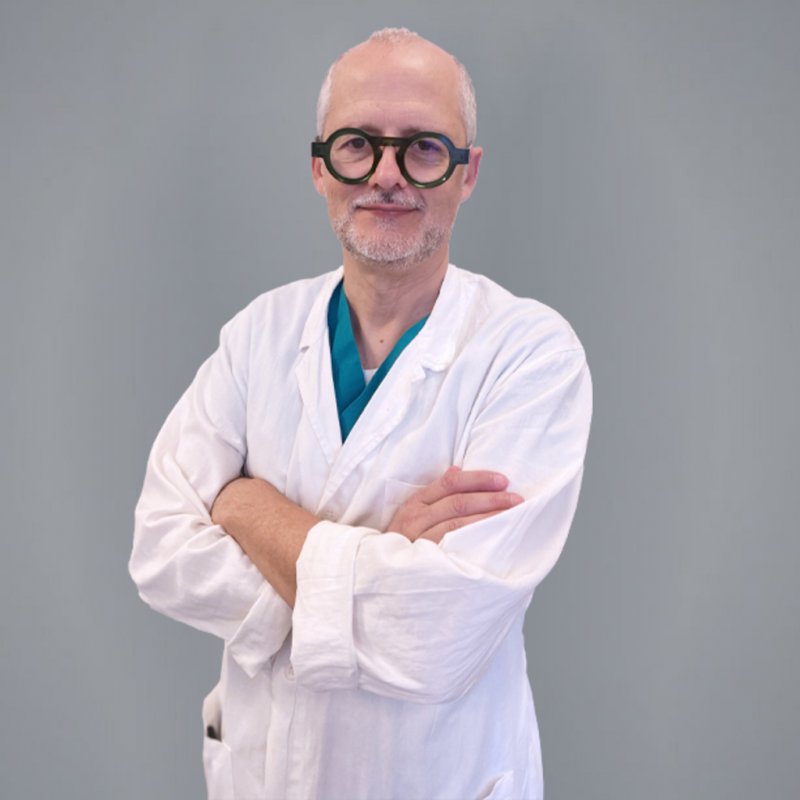Pancreatic islet auto-transplantation

出版日期: 23-12-2022
更新日期: 28-04-2023
主题: 胰腺疾病
预计阅读时间: 1 分钟
A team of researchers from the Diabetes Research Institute and surgeons from the Pancreas Center at the Ospedale San Raffaele and Istituto Clinico Humanitas signed an important study in Annals of Surgery. Research shows that it is possible to reduce the complications of some particularly complex pancreatic surgeries by completely removing the pancreas while at the same time using the technique of autotransplantation of the patient's own pancreatic islets to preserve the production of pancreatic hormones, insulin and glucagon, which are needed to regulate blood glucose control.
Difficulties of total pancreatectomy
Duodenocephalopancreasectomy (the removal of the head of the pancreas, duodenum, and terminal biliary tract) is one of the most complex and highest risk of complications of all abdominal surgery.
The most common complication is pancreatic fistula, which is the leakage of pancreatic juices through the seam that reconnects the remaining pancreas to the intestine. Pancreatic fluids have a digestive action, and their leakage can damage the surrounding tissues, causing infection and bleeding.
When the pancreas is particularly fragile, the surgeon may decide to remove the organ completely to eliminate the risk of pancreatic fistula, but total pancreasectomy inexorably results in diabetes that is particularly difficult to treat, related to the total loss of the hormones that regulate blood glucose control: insulin, glucagon, somatostatin, and pancreatic polypeptide.
San Raffaele study
The study evaluated for the first time the possibility of combining pancreatic islet autotransplantation with total pancreatic removal as an alternative to standard duodenocephalopancreasectomy in patients at high risk of pancreatic fistula.
The results confirmed that total pancreasectomy with islet autotransplantation reduced the number and severity of complications compared with standard surgery. Islet autotransplantation made it possible to preserve, at least in part, pancreatic hormone production, improving postoperative glycemic control and facilitating the management of diabetes following total pancreasectomy.
"When the pancreas is very fragile, the surgeon is aware that a pancreatic fistula will develop after surgery. However, he or she does not completely remove the pancreas because of the fear of the resulting metabolic consequences. This study shows, for the first time, that thanks to new cell transplantation therapies, there is an alternative and that pancreatic islet autotransplantation allows for total pancreasectomy with less fear of worsening the patient's quality of life," explains Dr. Gianpaolo Balzano, surgeon of the Pancreas Center at the Ospedale San Raffaele.
Pancreatic islet cell autotransplantation
Transplantation of one's own pancreatic islets (or autotransplantation) is a procedure performed to prevent or reduce the severity of diabetes after partial or total removal of the pancreas. It involves extracting endocrine tissue from the excised pancreas and infusing it into the portal vein, thus engineering the liver to produce insulin without the need for immunosuppressive therapy.
"Over the years, autotransplantation has been used almost exclusively in patients undergoing pancreatic removal due to chronic pancreatitis, when it cannot be treated with standard medical and surgical procedures. The study just published shows how islet transplantation can be expanded to be used safely in the presence of other diseases such as pancreatic cancer, for example," adds Professor Alessandro Zerbi, head of Pancreatic Surgery Department at the Istituto Clinico Humanitas and professor at Humanitas University.
"The study allowed us to show that we can offer new, safe and effective solutions to patients who present with different surgical characteristics and risks. In fact, it is an example of precision medicine using personalized cell therapy aimed at achieving the best outcome for the individual patient," explains Professor Lorenzo Piemonti, director of the San Raffaele Diabetes Research Institute at the Ospedale San Raffaele.
Performing autotransplantation requires coordinating surgical activities with tissue production activities in the laboratory, and this study also demonstrated how it is possible for multiple institutions to use a single facility to harvest and process pancreas for pancreatic islet production.
"It is an example of synergy and optimization for the development and large-scale application of advances in regenerative medicine. Facilities and knowledge for handling cells and tissues have a high specialized content and are very expensive to manage and set up. The possibility of concentrating this expertise in a few highly specialized facilities, which then perform a service function for the clinical community, is the model to pursue to ensure sustainability and the widest possible accessibility to these particularly advanced approaches to therapy," Professor Piemonti concludes.

